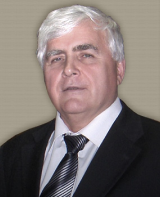
Journal of Advanced Materials and Technologies
Is a peer-reviewed scientific journal of research in materials science and related issues in materials physics and mechanics.
Journal publishes original articles, reviews, short reports written by both renowned scientists and young researchers that contribute to the development of modern materials science.
ISSN 2782-2192 (Print)
ISSN 2782-2206 (Online)
The journal promotes research and exchange of information in the field of theoretical and practical research into materials science, modeling of processes involved in the creation of new materials, including nanomaterials, their properties and application.
Scientific Journal is registered by the Federal Service for Supervision of Communications, Information Technology, and Mass Media (The certificate of registration PE No. FS 77-74804 of 25 January 2019 – periodical printed edition, journal)
The journal papers and metadata are available at Chemical Abstracts, CAS (American Chemical Society), Google Scholar, WorldCat, ROAR (Registry of Open Access Repositories), OpenAIRE (OpenAIRE - Open Access Infrastructure for Research in Europe), BASE (Bielefeld Academic Search Engine), RePEc: Research Papers in Economics, EBSCO.

Tambov State Technical University (TSTU)
Tambov, Russian Federation.

Merzhanov Institute of Structural Macrokinetics and Materials Sciences of Russian Academy of Sciences (ISMAN),
Chernogolovka, Moscow region, Russian Federation.
Circulation: 100 copies, periodicity: 4 times per year
Distribution: - Russia and abroad
Publisher: Tambov State Technical University
Rename information: «Advanced materials & technologies» (2016-2021), Print ISSN 2414-4606, Online ISSN 2541-8513
Chief Editor

Mikhail I. Alymov,
D.Sc.(Engineering), Professor, Corresponding Member of the Russian Academy of Sciences (RAS), Director of Merzhanov Institute of Structural Macrokinetics and Materials Sciences (ISMAN), RAS, Chernogolovka, Moscow Region, Russian Federation
Current issue
Articles
Estimation of graphene layers number and defectiveness of few-layered graphene particles by Raman spectroscopy
N. Goncharova, V. Samoilov, V. Elchaninova, A. Nakhodnova, E. Danilov, K. Tarasov
🗏 : 084-090
DOI: https://doi.org/10.17277/jamt.2024.02.pp.084-090
PDF:
Modification of fine-grained concrete with carbon nanotubes
D. Lyashenko, V. Perfilov
🗏 : 091-099
DOI: https://doi.org/10.17277/jamt.2024.02.pp.091-099
PDF:
The influence of hollow iron oxide microspheres on polyethylene climate aging
D. Metlenkin, N. Kiselev, B. Khaydarov, D. Suvorov, E. Boychenko, V. Ovchinnikov, Z. Abushakhmanova, E. Kolesnikov, I. Burmistrov
🗏 : 100-109
DOI: https://doi.org/10.17277/jamt.2024.02.pp.100-109
PDF:
Encapsulation of solar cells in a transparent polymer composite material
I. Dmitriev, A. Kochergin, S. Yakovlev, V. Levitskii, A. Abramov, E. Terukov
🗏 : 110-121
DOI: https://doi.org/10.17277/jamt.2024.02.pp.110-121
PDF:
A study of adsorption characteristics of activated carbon material for typical organic and inorganic pollutants
I. Shubin, O. Ananyeva
🗏 : 122-131
DOI: https://doi.org/10.17277/jamt.2024.02.pp.122-131
PDF:
Polyaniline and its composites with carbon nanomaterials: preparation, properties, application
I. Gutnik, T. Dyachkova, E. Burakova, E. Tugolukov, A. Rukhov, G. Titov
🗏 : 132-151
DOI: https://doi.org/10.17277/jamt.2024.02.pp.132-151
PDF:




















